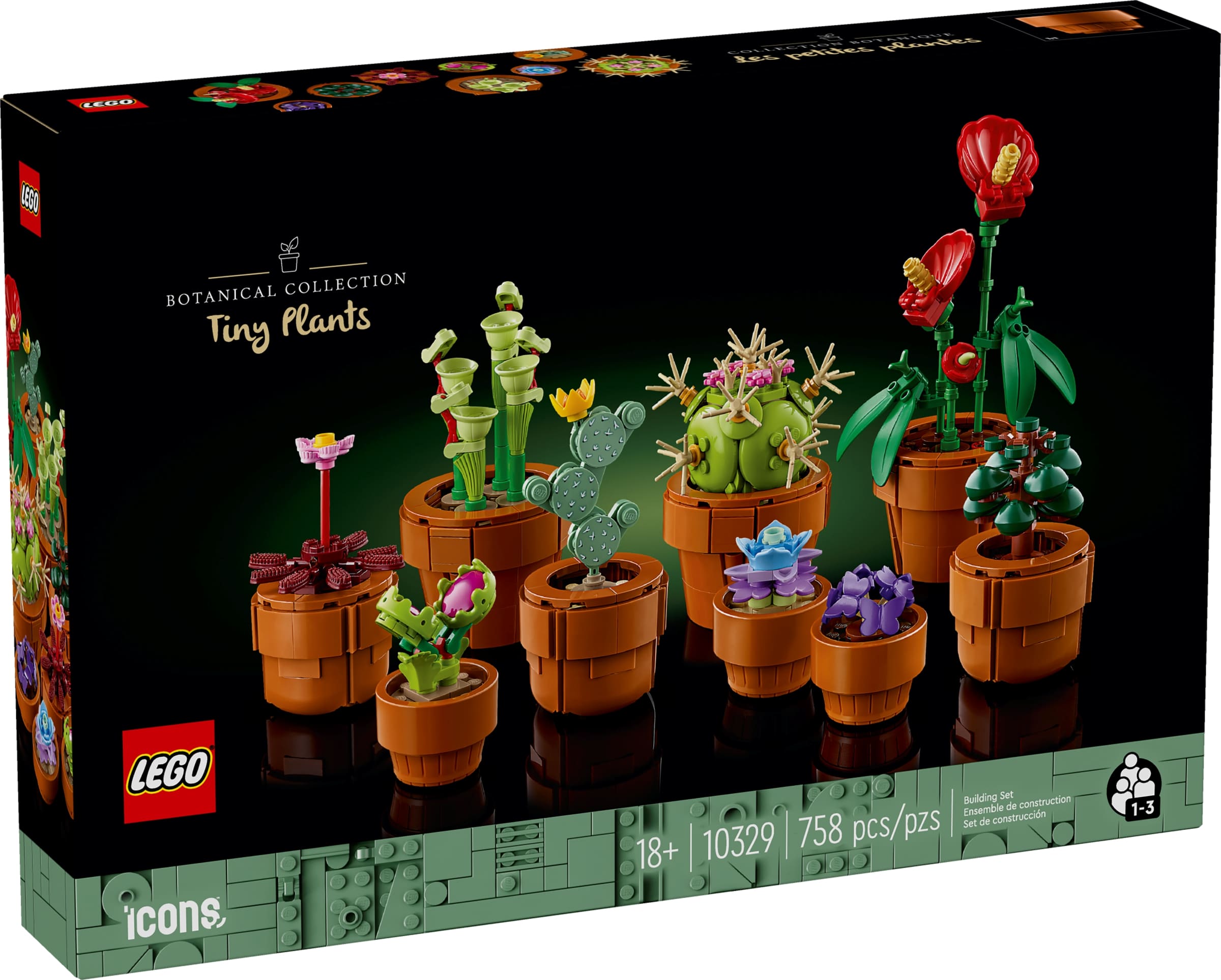
It was only a few days ago that LEGO revealed the new LEGO Icons Botanical Collection Tiny Plants (10329) which will be releasing on December 1. It has 758 pieces and retails for $49.99.
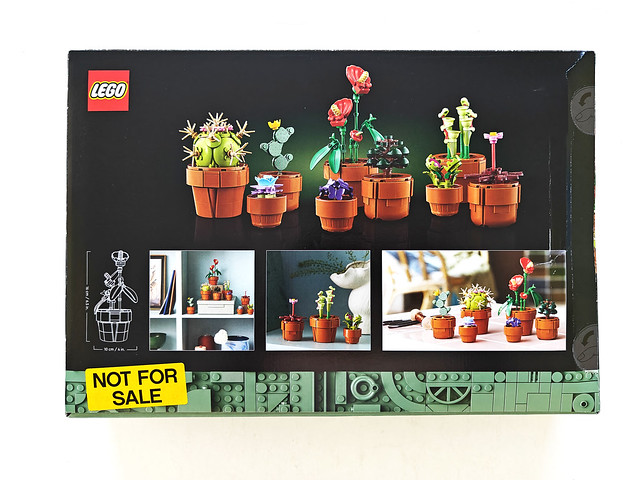
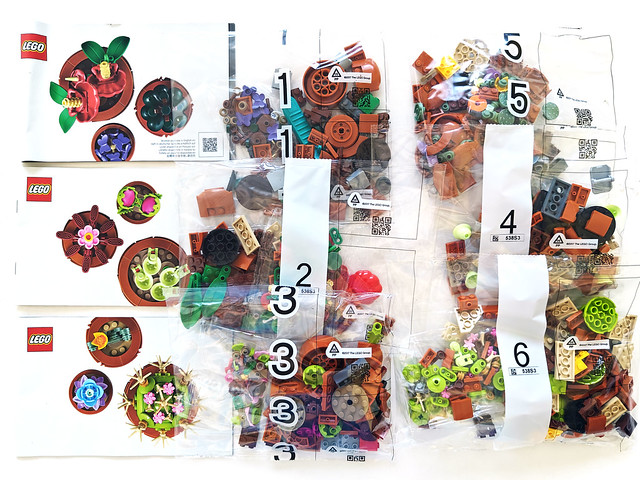
Build
The set is separated into three categories of plants: tropical, carnivorous, and arid. In each category of plants, they are fitted into small, medium and large pots. Note that all the pots are built the same way for all three types of plants which may get repetitive.
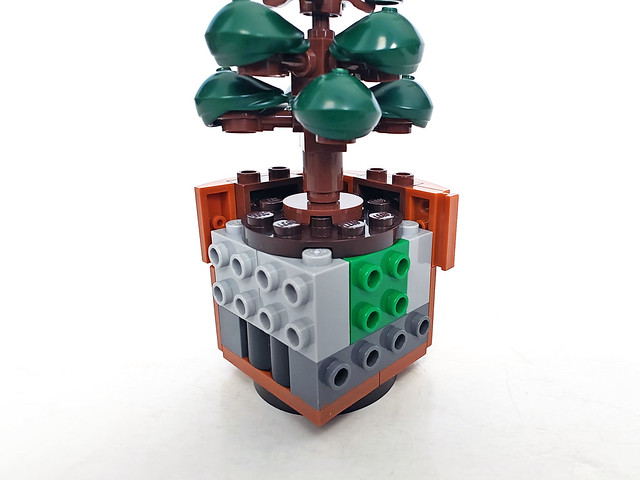

For the tropical plants, we have the False Shamrock (Oxalis triangularis), Jade Plant (Crassula ovata), and the Laceleaf (Anthurium andraeanum). The False Shamrock uses the smallest pot and it uses purple butterfly pieces for the leaves that are attached on a tan stalk. As you keep building the set, you notice a running theme with the interesting parts usage.

The Jade Plant uses the medium sized pot and the bigger leaves uses dark green flat caps. The use of the modified bricks allows the leaves to be spread out evenly on the branches. The top of the plant has more leaves that are clipped on.

The Laceleaf has the largest pot using a similar building technique as the medium one. The stalks plug right in to the round tile and the flowers use red clamshells.
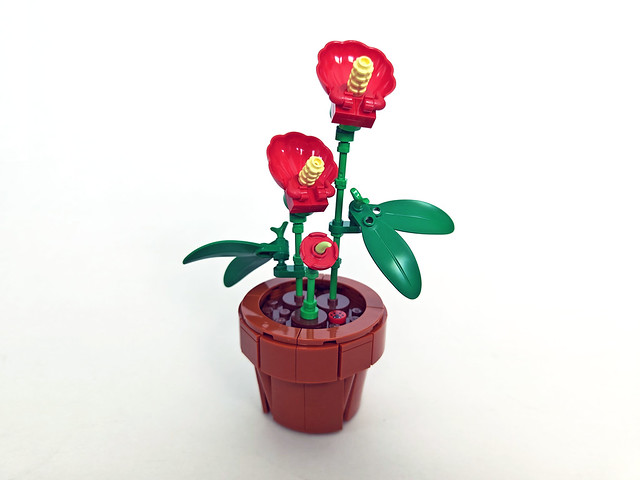
On to the carnivorous plants, we have the Venus Flytrap (Dionaea muscipula), Red Sundew (Drosera brevifolia), and the Yellow Pitcher Plant (Sarracenia flava). The Venus Flytrap uses cake icing pieces for the leaves.
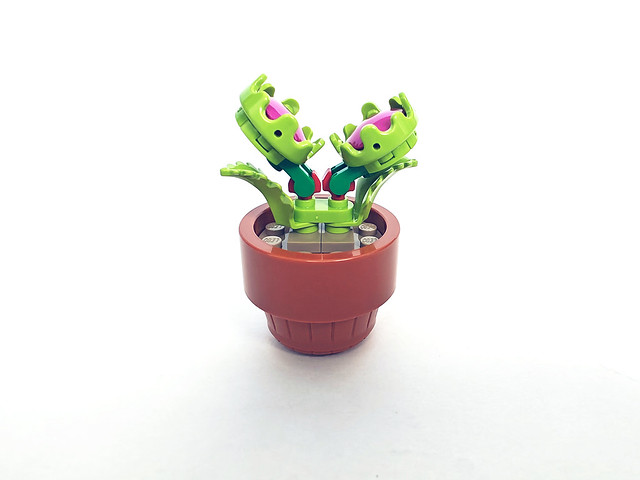
The Red Sundew’s uses red hairbrushes for the red tentacle leaves as well as pink pauldrons for the five petal pink flower.

For the Yellow Pitcher Plant, there’s even more interesting parts usage as mops and pith helmets are used to recreate the plant.

Lastly we have the arid plants which include Britton’s Liveforever (Dudleya brittonii), Eastern Prickly Pear (Opuntia humifusa), and Pincushion Cactus (Mammillaria crinita f. zeilmanniana). Britton’s Liveforever is very simple as it uses tooth and leaf pieces that are inverted to give it the plant’s shape.

The Eastern Prickly Pear uses stacked round plates to give it the distinct angles while using printed round tiles for the spiny bristles. It looks nice from the front but very bad from the back.

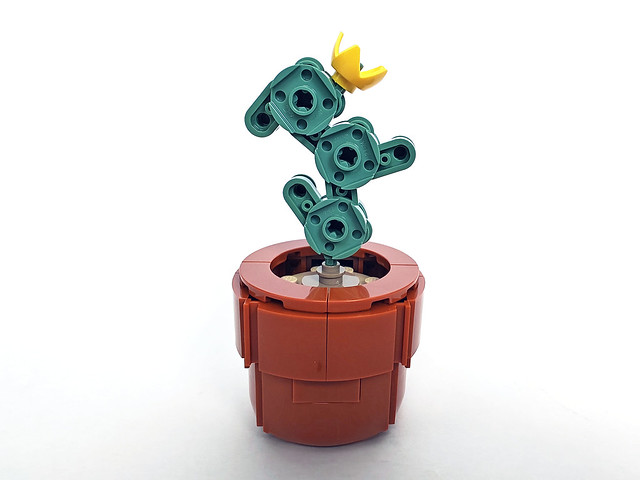
The Pincushion Cactus uses the SNOT bricks and brackets for the bottom of the plant while having the flowers at the top. The dish pieces with grass stalks cover the four sides while the gaps have smaller dishes on bars.
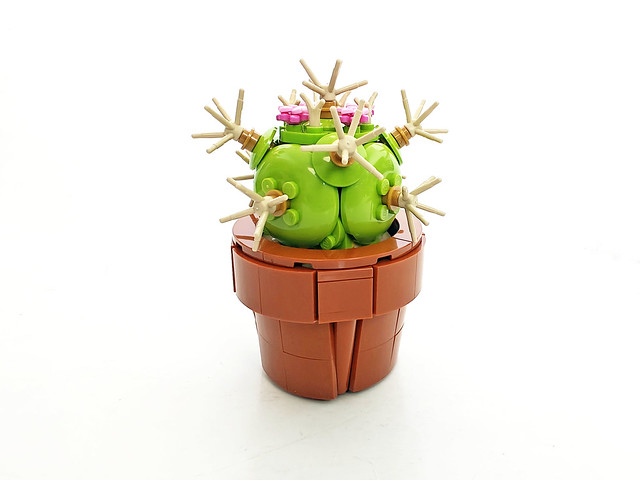
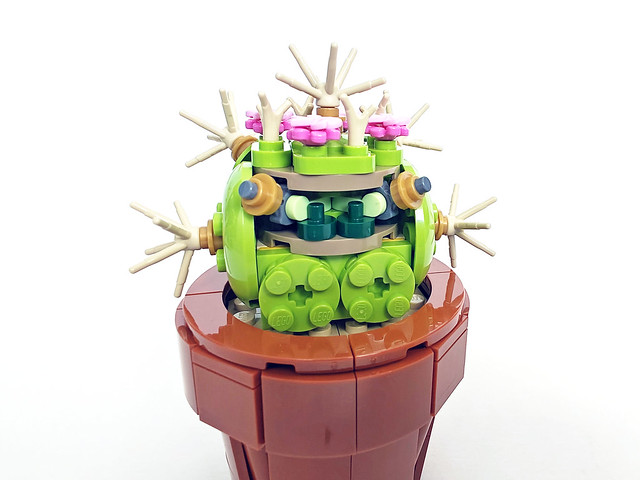
Results
As mentioned before, the LEGO Icons Botanical Collection Tiny Plants (10329) makes use of interesting parts that work well to give the shape of the various plants including things that you would think of using for them such as the hats and mops.
The one thing that I didn’t really like is that building the pots got very repetitive since you have to build three of each size. The terracotta pots do look very good but I feel that more building attention to the plants themselves would’ve been better.
Overall, the Tiny Plants do look very cute and you can display them everywhere around the house. The price point for it seems just a little bit high for what you get especially since you can get much more detailed plants at the same price with the Succulents (10309).

Thank you to LEGO for sending in this set for me to review. The content above represents my own opinion and not the company. Review sets sent in does not guarantee a positive review.
When you make a purchase or, sometimes, carry out some other action as direct result of clicking on a link at The Brick Fan, we will receive a small commission.
The Brick Fan is a participant in the Amazon Services LLC Associates Program, an affiliate advertising program designed to provide a means for sites to earn advertising fees by advertising and linking to Amazon.com. As an Amazon Associate I earn from qualifying purchases.
We partner with Rakuten Advertising, who may collect personal information when you interact with our site. The collection and use of this information is subject to the privacy policy located here: https://rakutenadvertising.com/legal-notices/services-privacy-policy/
